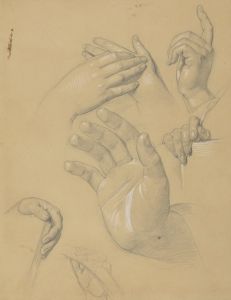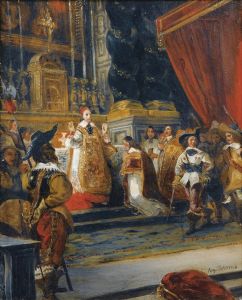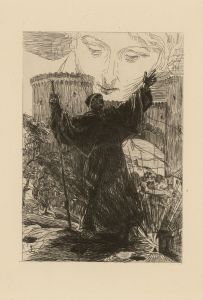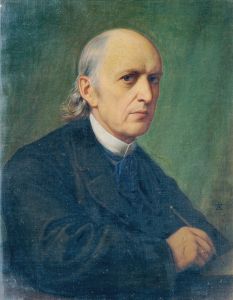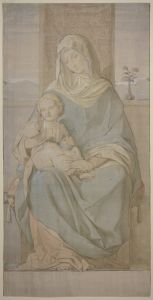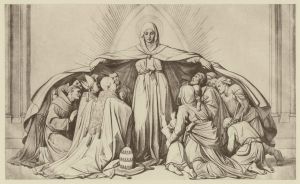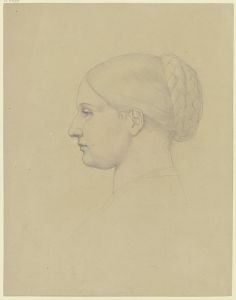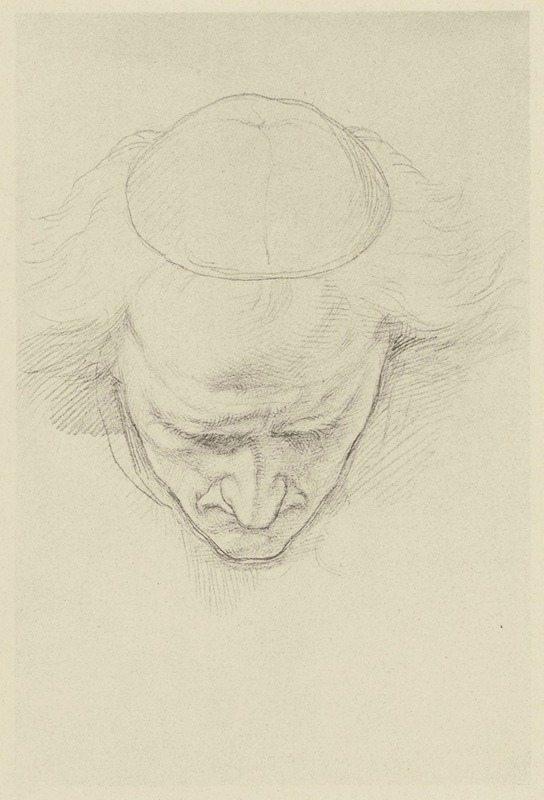
Studium zu dem Kopf des Gross-Pönitentiario
A hand-painted replica of Eduard von Steinle’s masterpiece Studium zu dem Kopf des Gross-Pönitentiario, meticulously crafted by professional artists to capture the true essence of the original. Each piece is created with museum-quality canvas and rare mineral pigments, carefully painted by experienced artists with delicate brushstrokes and rich, layered colors to perfectly recreate the texture of the original artwork. Unlike machine-printed reproductions, this hand-painted version brings the painting to life, infused with the artist’s emotions and skill in every stroke. Whether for personal collection or home decoration, it instantly elevates the artistic atmosphere of any space.
Eduard von Steinle (1810-1886) was a prominent German painter associated with the Nazarene movement, which sought to revive honesty and spirituality in Christian art. One of his notable works is "Studium zu dem Kopf des Gross-Pönitentiario" (Study for the Head of the Grand Penitentiary), which exemplifies his meticulous approach to religious and historical subjects.
The painting, created in the 19th century, is a detailed study focusing on the head of the Grand Penitentiary, a high-ranking official in the Roman Catholic Church responsible for issues related to the internal forum, including matters of conscience and the granting of absolutions. This role is significant within the ecclesiastical hierarchy, and Steinle's work captures the gravitas and solemnity associated with the position.
Steinle's technique in this study is characterized by precise and delicate brushwork, which highlights his skill in rendering human features with a high degree of realism. The subject's expression is contemplative, reflecting the introspective nature of the Grand Penitentiary's duties. The artist's use of light and shadow adds depth to the portrait, emphasizing the contours of the face and the thoughtful gaze of the subject.
The Nazarene movement, to which Steinle belonged, was founded in the early 19th century by a group of German artists who sought to return to the purity and spirituality of medieval and early Renaissance art. They were inspired by artists such as Raphael and Albrecht Dürer, and their work often featured religious themes and meticulous attention to detail. Steinle's "Studium zu dem Kopf des Gross-Pönitentiario" is a testament to these ideals, showcasing his dedication to capturing the spiritual essence of his subjects.
Steinle's influence extended beyond his paintings; he was also a respected teacher and mentor. His works were well-regarded in his time, and he contributed to various significant projects, including frescoes in churches and public buildings. His commitment to the principles of the Nazarene movement and his ability to convey deep religious sentiment through his art earned him a lasting place in the history of 19th-century German painting.
"Studium zu dem Kopf des Gross-Pönitentiario" remains an important example of Steinle's work, illustrating his technical prowess and his ability to imbue his subjects with a sense of spiritual depth. The painting is a valuable piece for those interested in the intersection of art and religion, as well as the broader context of the Nazarene movement and its impact on 19th-century European art.
In summary, Eduard von Steinle's "Studium zu dem Kopf des Gross-Pönitentiario" is a significant work that reflects the artist's dedication to religious themes and his mastery of portraiture. Through this study, Steinle captures the solemnity and introspection of the Grand Penitentiary, contributing to the rich tradition of religious art in the 19th century.





